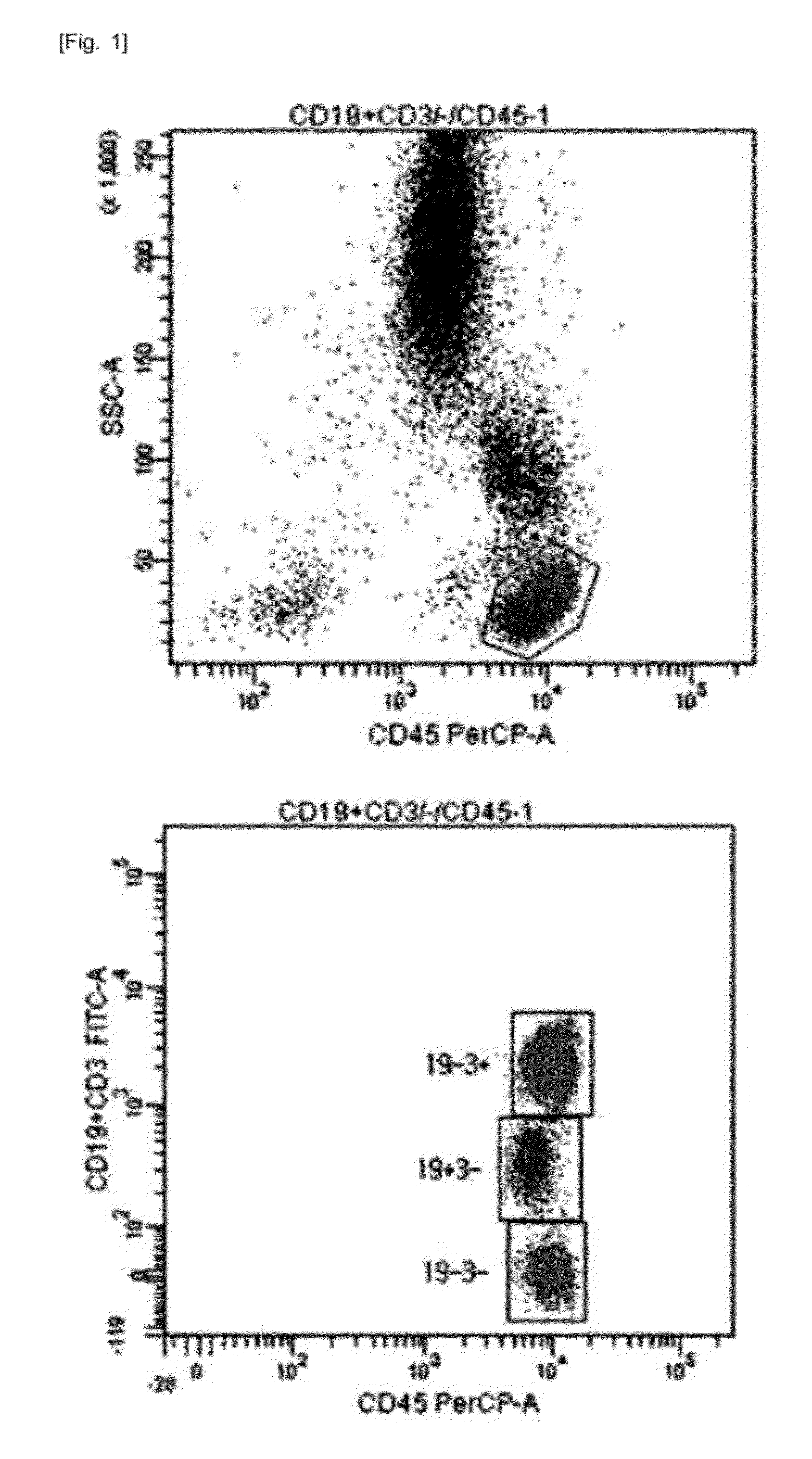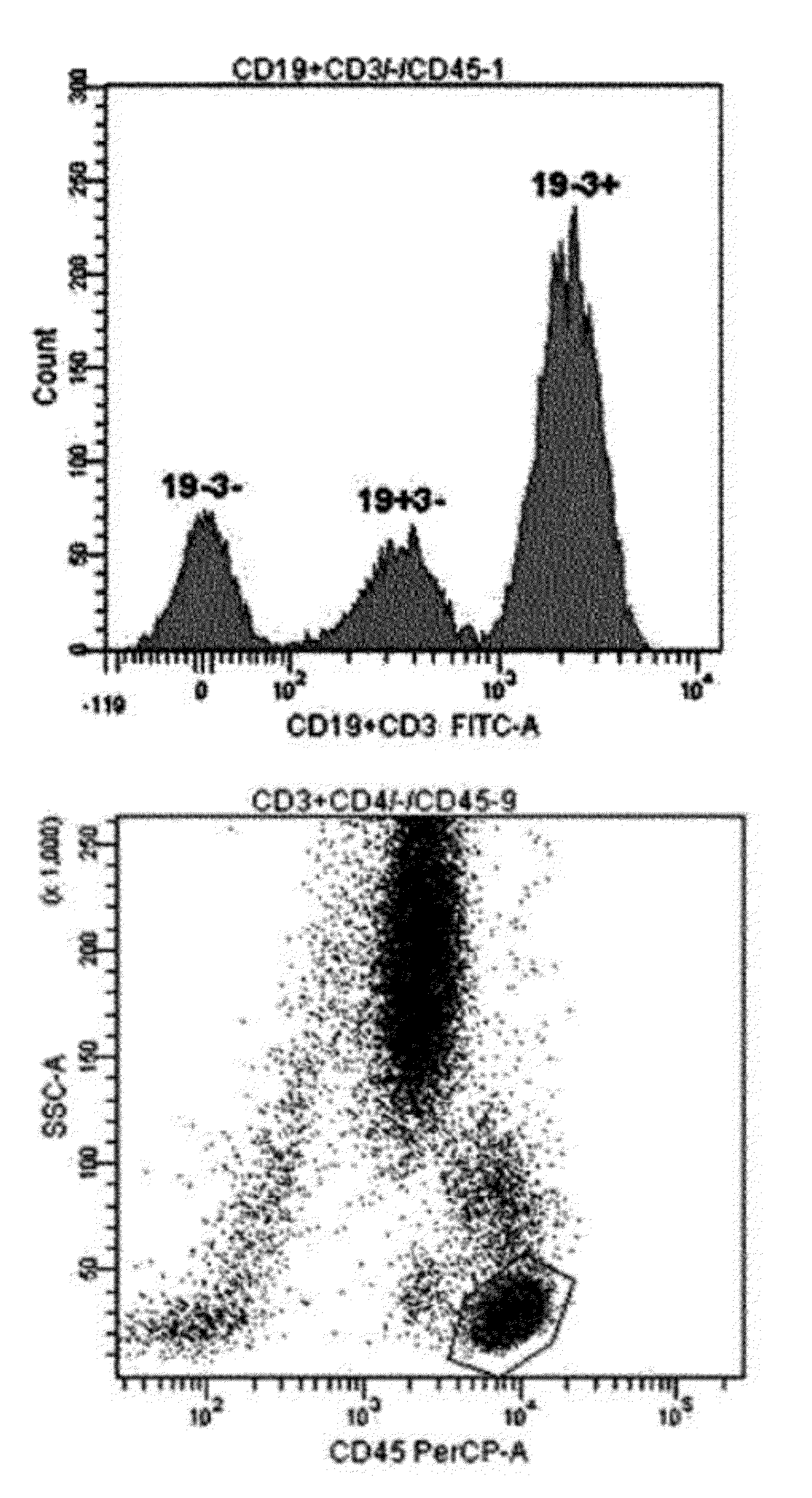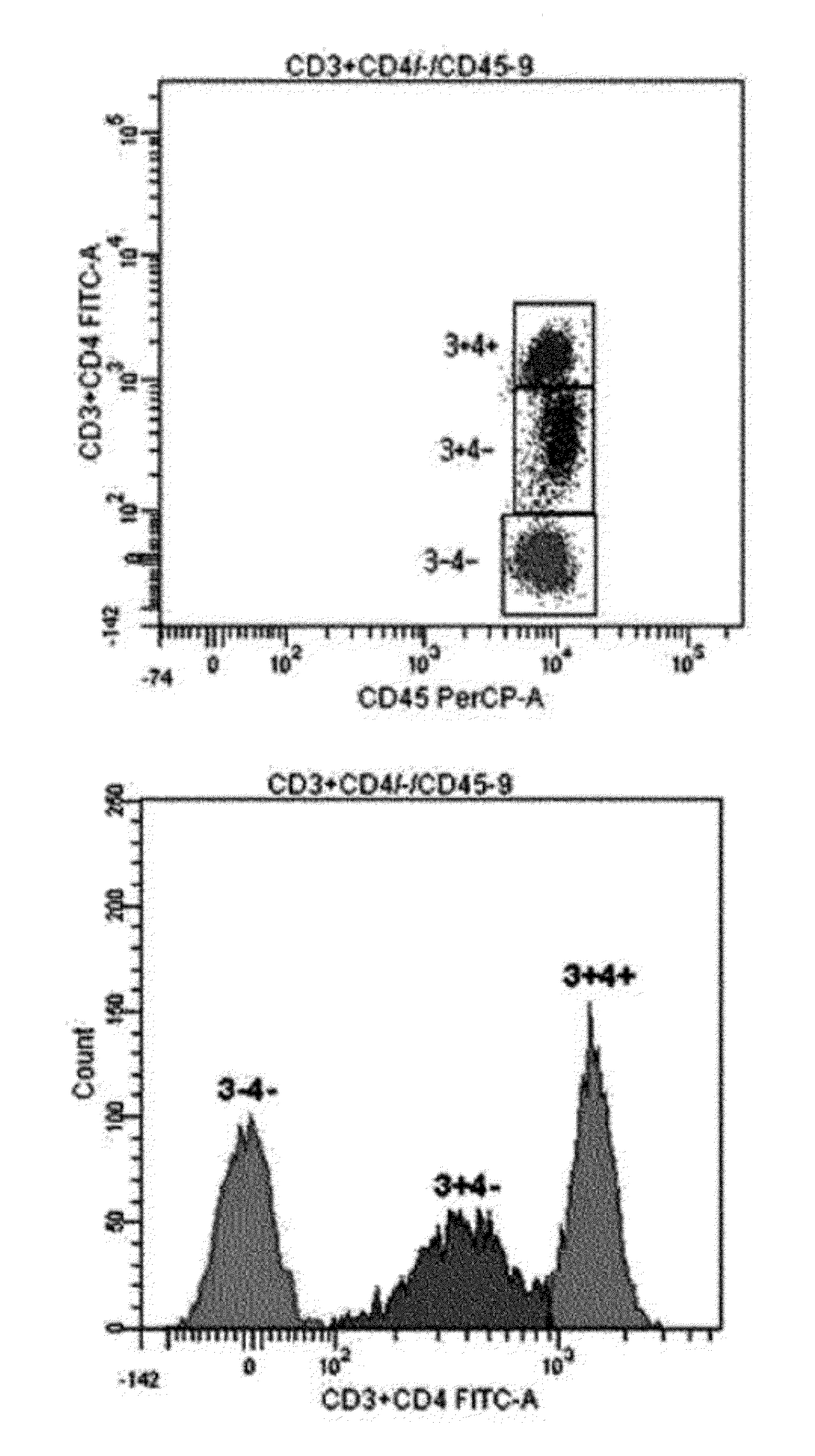Flow cytometry method through the control of fluorescence intensities
a flow cytometry and intensity technology, applied in the field of flow cytometry through the control of fluorescence intensities, can solve the problems of complex gating strategy, insufficient indentification of different cell populations, and unsuitable reference method for manual microscopic sorting of leukocytes, etc., and achieve the effect of more rapid and convenient operation
- Summary
- Abstract
- Description
- Claims
- Application Information
AI Technical Summary
Benefits of technology
Problems solved by technology
Method used
Image
Examples
example 1
Single-Color 3-Target Flow Cytometry
[0043]For single-color 3-target flow cytometry, two kinds of monoclonal antibodies labeled with the same fluorochrome having different intensities were used. One monoclonal antibody cocktail consisting of 0.1 μl CD3-FITC, 5 μl CD4-FITC, and 5 μl CD45-PerCP, and another monoclonal antibody cocktail consisting of 0.5 μl CD19-FITC, 5 μl CD3-FITC, and 5 μl CD45-PerCP were used (see Table 1). After incubation at room temperature for 20 minutes, erythrocytes were lysed in BD FACS™ lysing solution (Becton Dickinson Biosciences, Ontario, Canada) and incubated in a dark room for 10 minutes or more. The resultant cells were washed with phosphate buffered saline (PBS) (Medical & Biological Laboratories co., LTD, Nagoya, Japan) and then re-suspended in 0.2 mL PBS. Lymphocytes were gated using CD45 / SSC (see FIG. 1). For precision analysis, two peripheral blood samples obtained from a healthy adult were analyzed 10 times each, and CVs were calculated (see Table...
example 2
Single-Color 4-Target Flow Cytometry
[0047]For single-color 4-target flow cytometry, three kinds of monoclonal antibodies labeled with the same fluorochrome having different intensities were used.
[0048]The flow cytometry was performed in the same way as in Example 1 except that a monoclonal antibody cocktail consisting of 0.1 μl CD56-PE, 0.5 μl CD19-PE, 20 μl CD4-PE and 5 μl CD45-PerCP was used.
[0049]As can be seen from FIG. 2, although three kinds of monoclonal antibodies labeled with the same fluorochrome having different intensities were used, the four cell populations were clearly classified, and the profiles of four peaks in the histogram were clear enough to determine a marker with ease.
example 3
Two-Color 9-Target Flow Cytometry
[0050]For 2-color 9-target flow cytometry, two kinds of monoclonal antibodies labeled with FITC having different intensities and two kinds of monoclonal antibodies labeled with PE having different intensities were used. A monoclonal antibody cocktail consisting of 0.1 μl CD5-FITC, 5 μl CD3-FITC, 0.5 μl CD19-PE, 5 μl CD4-PE, and 5 μl CD45-PerCP was used for flow cytometry of a bone marrow sample obtained from a mantle cell lymphoma patient (see Table 1). Also, to show that fluorescence intensities of antibodies used in a method according to an exemplary embodiment of the present invention can be adjusted by adjusting intensities of a fluorochrome conjugated to the respective antibodies rather than concentrations of the antibodies, a monoclonal antibody cocktail consisting of 5 μl old CD3-FITC whose fluorescence had faded (period of validity Jul. 1, 2004, 5 years 3 months prior), 5 μl CD4-FITC, 5 μl old CD25-PE (period of validity Jun. 30, 2004, 5 year...
PUM
 Login to View More
Login to View More Abstract
Description
Claims
Application Information
 Login to View More
Login to View More - R&D
- Intellectual Property
- Life Sciences
- Materials
- Tech Scout
- Unparalleled Data Quality
- Higher Quality Content
- 60% Fewer Hallucinations
Browse by: Latest US Patents, China's latest patents, Technical Efficacy Thesaurus, Application Domain, Technology Topic, Popular Technical Reports.
© 2025 PatSnap. All rights reserved.Legal|Privacy policy|Modern Slavery Act Transparency Statement|Sitemap|About US| Contact US: help@patsnap.com



